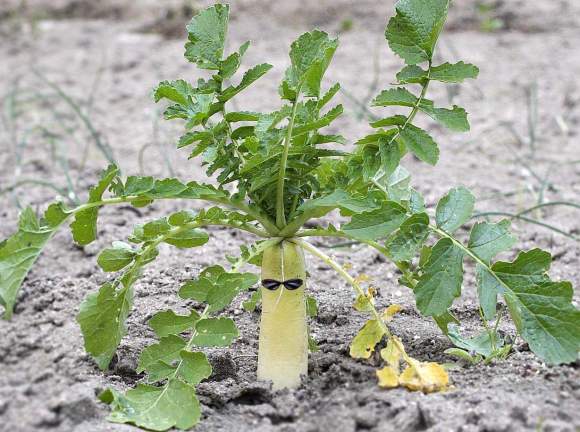
I’ve lived among Japanese fruits and vegetables for 17 years and one thing I can say for sure is that vegetables are waaay smarter than fruits.
I say this even having lived all of my time in Okayama Prefecture, famous for its fruit, most of which are grown to gigantic proportions. Such oversize fruit makes for good local folk-tale building as seen in the legend of Momotaro, the Peach Boy. The story goes that one day an old woman found a giant peach floating down the river. She plucked the peach out of the river and took it home to show her husband. But when the old man started to cut the peach open with a knife, a baby boy jumped out (this was surely the first peach Cesarian birth ever recorded). The Peach Boy grew up and went on to slay demons and become a local hero. Although there is no information on Momotaro’s biological parents, his mother was most definitely pink, rotted just after he was born, and was quite possibly even a fruitcake. Unfortunately, there hasn’t been a great fruit story since.
▼ The juicy birth of Momotaro-san
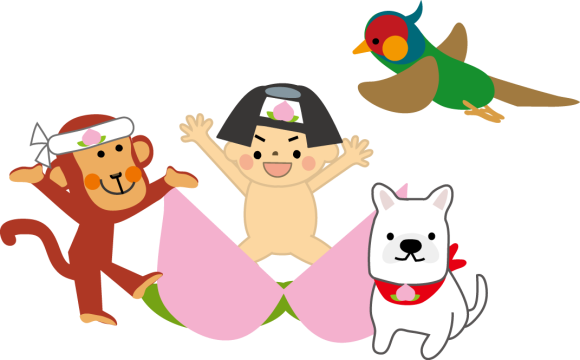
But the story of Momotaro is almost believable in Okayama, where peaches are coddled by their growers who wrap each piece of fruit in its own paper covering while the fruit is still on the branch. This protects the little darlings from skin blemishes, insects and the elements. It’s a wonder each fruit doesn’t get a hat and sunscreen provided by the management.
Another luscious fruit grown in Okayama is muscat grapes. To eat them properly, you painstakingly peel the skin off each globule before indulging in the fleshy bits. These grapes are also used to make a sweet dessert wine.
▼ Beautiful grapes, but do we have to peel each one and gets our fingers all sticky just to eat them?
Does all this attention add up to fruit that really performs? As a fruit and vegetable investigative reporter, I have to say no. All that pampering just produces lazy fruit that can no longer grow on its own, nor look after itself. Most fruit is so dumb that when it falls from the branch, it gets bruised and is unfit for eating.
▼ This usually sweet fruit has had a bitter experience
I live in the southern part of the prefecture, on Shiraishi Island in the Seto Inland Sea. Some of our 570 residents raise fruit while others prefer vegetables. I always feel sorry for the legal guardians of fruit because they spend so much more time and energy trying to raise a decent fruit.
▼ Some of my neighbors who raise mulberries have installed nets to catch the little berries should they fall before getting picked.
Even watermelons, that proliferate on the ground, cannot fend for themselves these days. Farmers cover the plants with extensive netting to protect them from hungry birds. What will become of our young fruits should they have to grow up in the real world without all these safety nets? They’ll die of consumption–by predators. Face it: If it were survival of the fittest, we’d be left with only thick-skinned fruit of the citrus variety, and lots of vegetables.
Vegetables are so survival savvy, they thrive on their own with minimal care. Most of them grow on or near the ground where they don’t have far to fall while others grow underground, where airborne fleets cannot find them. Vegetables don’t require ladders to be picked, they won’t rot as soon as they’ve ripened and they understand that you are busy and will come pick them soon enough. They are far more patient than that impetuous fruit that jumps off the branch as soon as its ready without taking into account others’ schedules.
Vegetables such as the onion, a root vegetable, comes to the surface to let you know when it is ready to be harvested.
▼ Here I am, pick me!
▼ Island onions enjoying some free time after the harvest
Vegetables are in no hurry at all and are a pleasure to be around. It’s no wonder the already busy Japanese hold vegetables close to their hearts. In fact, many of the veggies have become celebrities in their own right.
So here it is–the top three of Japan’s smartest vegetables:
1. Daikon Radish
The highest IQ vegetable is surely the daikon radish, who, being a root vegetable, scores in the top percentile of the vegetable kingdom.
▼ Daikon Bob lives in my neighborhood. Don’t ya just love his hair?
Healthy, stylish and athletic, the daikon radish is in a class by itself. Daihoonji Temple in Kyoto holds a ceremony for the esteemed radish every year at the beginning of December and serves up to 10,000 servings of daikon soup to participants seeking good health. One bowl of steaming daikon soup costs 1,000 yen (that’s almost US$10 for a bowl of soup!). The stylish radish is so faddish, it has a Japanese phrase daikonashi named after it to describe people with big thick legs.
Some daikon have risen to fame for their athletic ability. Konsai Umemama’s story and photos of his Escaping Radish were a runaway hit on Twitter. Many others have discovered the human-like qualities of the daikon and photographed them. Some of them are even sexy.
Curious, I went out for a walk around the island to see if I could find some daikon engaged in activity. It wasn’t long before I came across this radish out getting some exercise.
▼ It must feel good to get out and stretch the legs after being in that hole all day!
I also came across these two daikon chatting on a ledge.
The rutabaga, a cousin twice removed of the radish, has also risen to the top of the heap of intelligence due to its rollability and propensity for sports. Yoshio Otsuka, highly revered for his passion for reviving strains of extinct turnip species, qualified to participate in the 2012 International Rutabaga Curling Championship in New York. And don’t miss the video Sympathy for the Vegetable (“Please allow me to introduce myself, I’m a plant of health and taste”) which helps explain the roots of the rutabaga.
2. Renkon (Lotus Root)
Another genius within the vegetable kingdom is renkon, or “lotus root,” an auspicious vegetable eaten on New Years in Japan.
▼ Renkon is thought to bring good luck
The fact that renkon has holes in it makes it a very stylish vegetable on the plate. I put it up there in the category of other cool things with holes in them such as Swiss cheese and 5-yen coins.
▼ With all those holes, you could hardly choke on renkon.
Not only is eating the vegetable said to bring good luck, but the lotus is very spiritual and the flower is the Buddhist symbol of enlightenment. And did you know that the leaves and seeds are edible?
▼ Looks like dessert to me!
The lotus flower is revered for its ability to rise from the bottom of dirty, murky water to bloom into a beautiful pure flower. This symbolizes the process of attaining enlightenment. The Japanese even have a word, kanrensetsu, which means lotus flower viewing. There are even kanrensetsu parties where people wake up before dawn and assemble at lotus ponds to watch the flowers bloom at the break of day. I’m not sure if you can reach enlightenment by eating lotus root, but it should be pointed out that Buddha’s most notable teaching on “emptiness” as a necessary step to enlightenment is reflected in the Lotus Sutra. The lotus is a symbol of the endless cycle of life, death and rebirth. That’s one deep-thinking plant.
3. Seaweed
The third most intelligent vegetable–one often overlooked in the west but prized in the east–is the precocious seaweed. The aquatic equivalent to a land-based root vegetable, it chooses to grow underwater where it is protected, and thrives.
Nori, and it’s relatives wakame and konbu provide an endless source of nutrition and flavor and are staples in Japanese food. Konbu is one of the three ingredients in dashi (Japanese broth) and is responsible for umami, or savory taste, the fifth flavor recently acknowledged as an addition to the stalwart four: sweet, sour, bitter and salty. Seaweed is easy to grow (they’ll grow on and cling to nets submerged in the sea) and can even be turned into biofuel.
▼ A Shiraishi Island fisherman communes with his nori nets in the Seto Inland Sea
▼ Shiraishi Island nori eventually gets packaged and sold.
And if you’re not convinced yet of the high IQ of this sea vegetable, then here is something that will surely convince you. Tanotaiga, an artist tracing the history of seaweed-making in the Seto Inland Sea, went as far as constructing a boat from the stuff!
▼ Both the hull and sail of Tanotaiga’s boat are made from seaweed.
Okay, pretty clever. But will it float?
▼ Surely, you didn’t have any doubts, did you?
That nori is one smart sea plant. It has proven that you can have your boat and eat it too. And wait–there’s more! Now you can give your child the gift of a 3-meter-long (10ft) seafood plush toy!
It’s no surprise that fruits just can’t compete with good-natured vegetables who are clever, resourceful, efficient and even plushy. Fruits may be more beautiful, juicier or more colorful, but they just don’t measure up to the vegetables’ IQ. Perhaps that’s why there are many vegetarians in the world, but few fruitarians.
Nominate your favorite high-IQ vegetable in the comments section!
Header Image: Chris Thyregod
Insert Images: Wikipedia (Luigi Chiesa), Wikipedia (weswind) Wikimedia (Lyzzy), Wanpug, Sunao Amano, Chris Thyregod
All others: RocketNews24

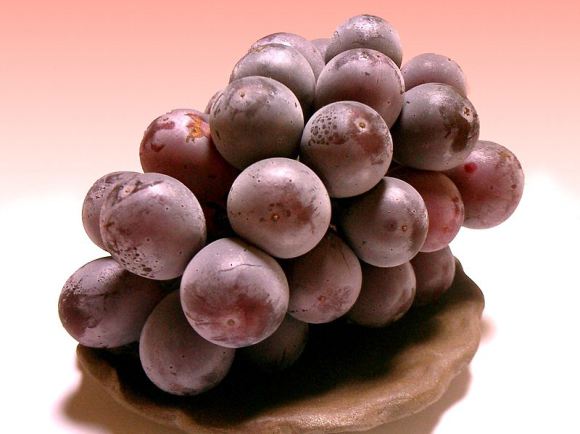
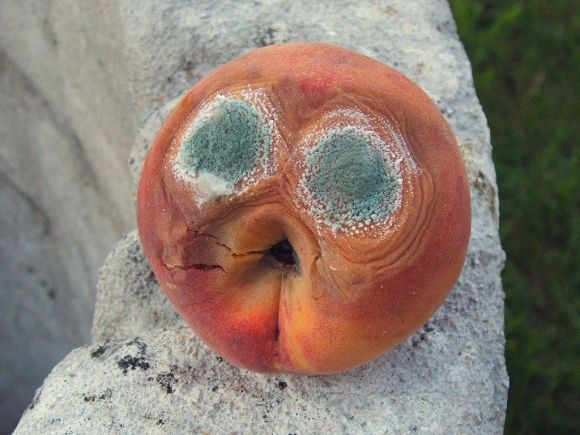
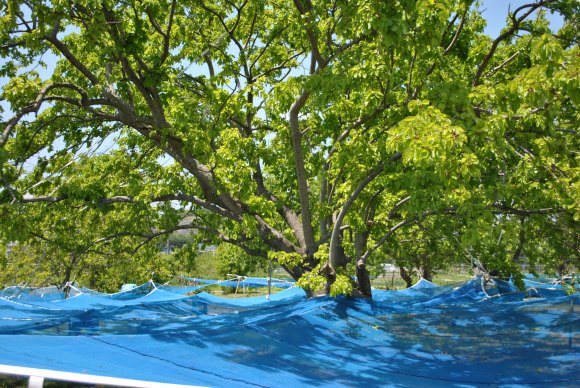
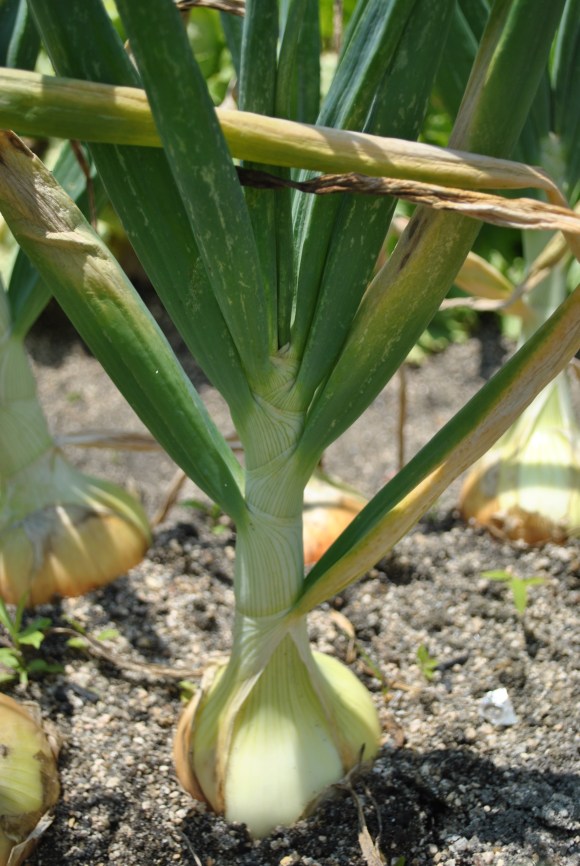
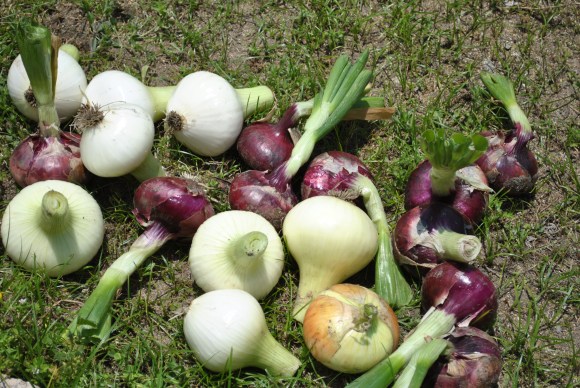
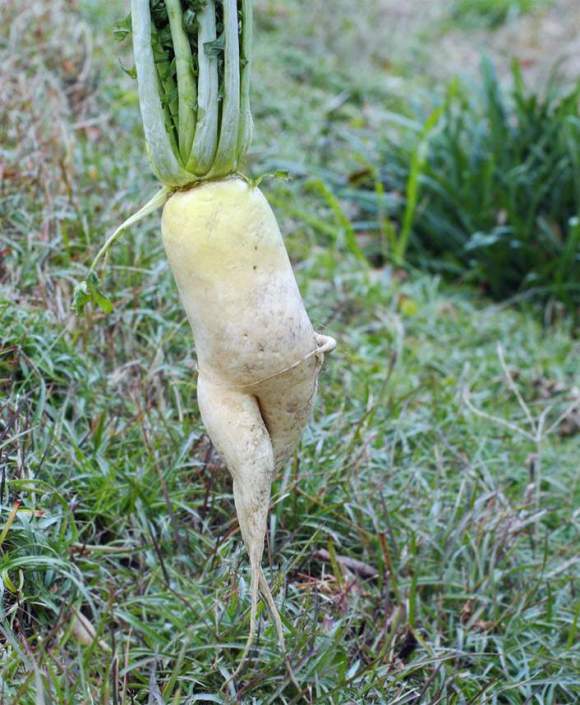
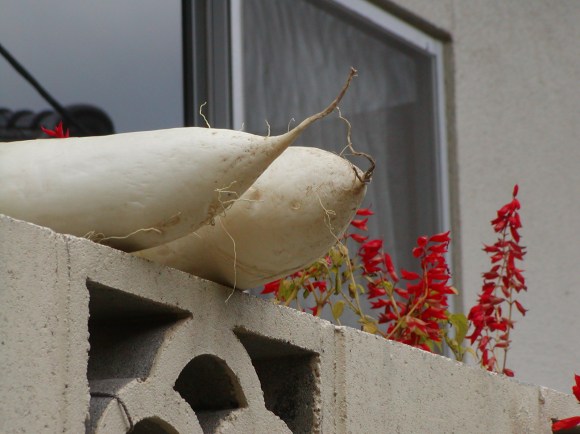
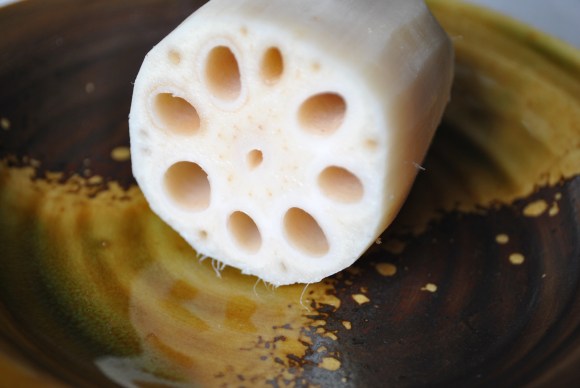
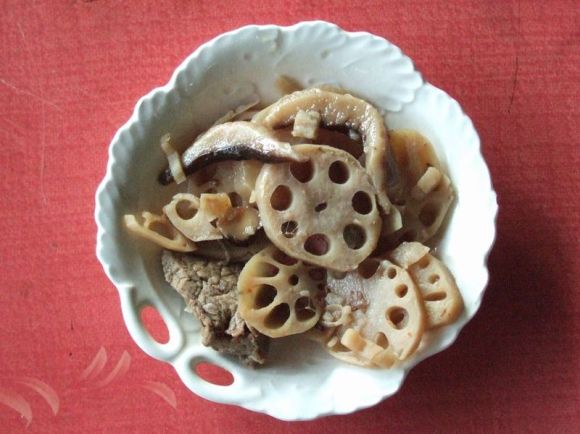


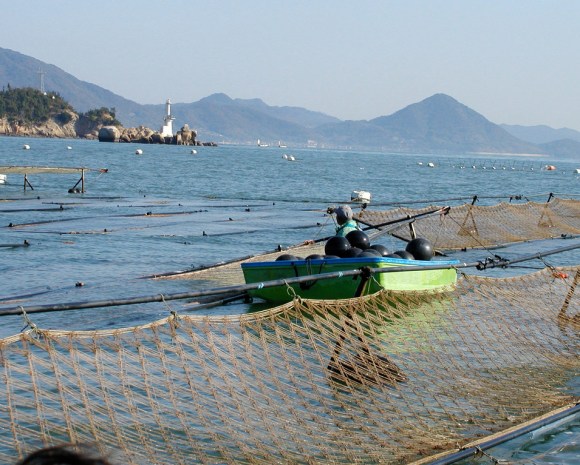
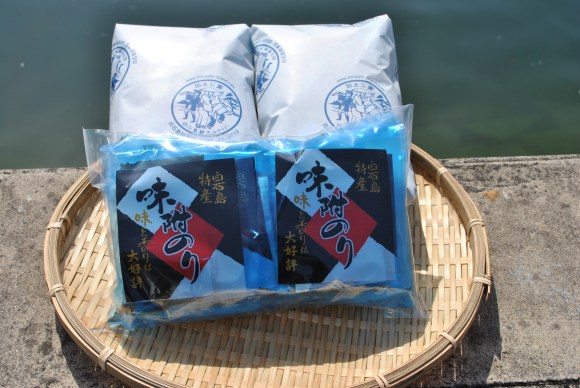
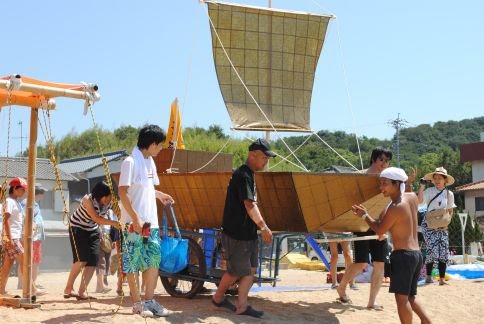
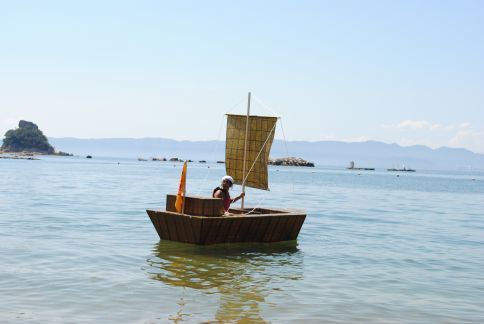
 Are 100 yen shop Daiso’s Japanese radish seeds worth your time? Let’s find out【Experiment】
Are 100 yen shop Daiso’s Japanese radish seeds worth your time? Let’s find out【Experiment】 Japanese cook creates adorable meal of “cats” feasting on fish!
Japanese cook creates adorable meal of “cats” feasting on fish! Can you guess the most-consumed vegetable in Japan? This survey reveals the results
Can you guess the most-consumed vegetable in Japan? This survey reveals the results New book teaches you to make grated radish animals: Healthier than latte art, just as cute
New book teaches you to make grated radish animals: Healthier than latte art, just as cute World’s largest type of daikon radish can now be ordered online in Japan
World’s largest type of daikon radish can now be ordered online in Japan Seaside scenery, history, and so many desserts on Yokohama’s Akai Kutsu【Japan Loop Buses】
Seaside scenery, history, and so many desserts on Yokohama’s Akai Kutsu【Japan Loop Buses】 Sandwiches fit for a sumo served up in Osaka【Taste Test】
Sandwiches fit for a sumo served up in Osaka【Taste Test】 Foreigner’s request for help in Tokyo makes us sad for the state of society
Foreigner’s request for help in Tokyo makes us sad for the state of society Japanese ramen restaurants under pressure from new yen banknotes
Japanese ramen restaurants under pressure from new yen banknotes Japan’s summertime towelket pillowcases are even better with the addition of Ghibli stars【Photos】
Japan’s summertime towelket pillowcases are even better with the addition of Ghibli stars【Photos】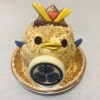 Samurai chick pudding cake is Japan’s newest hard-to-buy, delicious-to-eat treat【Taste test】
Samurai chick pudding cake is Japan’s newest hard-to-buy, delicious-to-eat treat【Taste test】 No talking allowed, at all, at new Tokyo cafe, even when you’re ordering【Videos】
No talking allowed, at all, at new Tokyo cafe, even when you’re ordering【Videos】 Mikado Coffee is a 76-year-old coffee chain with a major celebrity connection
Mikado Coffee is a 76-year-old coffee chain with a major celebrity connection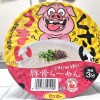 Does Japan’s “Stinky but Tasty” tonkotsu ramen live up to its name?
Does Japan’s “Stinky but Tasty” tonkotsu ramen live up to its name? Stay at a Japanese capsule hotel in Tokyo for less than US$20 a night
Stay at a Japanese capsule hotel in Tokyo for less than US$20 a night McDonald’s new Happy Meals offer up cute and practical Sanrio lifestyle goods
McDonald’s new Happy Meals offer up cute and practical Sanrio lifestyle goods French Fries Bread in Tokyo’s Shibuya becomes a hit on social media
French Fries Bread in Tokyo’s Shibuya becomes a hit on social media Studio Ghibli releases new action figures featuring Nausicaä of the Valley of the Wind characters
Studio Ghibli releases new action figures featuring Nausicaä of the Valley of the Wind characters Red light district sushi restaurant in Tokyo shows us just how wrong we were about it
Red light district sushi restaurant in Tokyo shows us just how wrong we were about it New private rooms on Tokaido Shinkansen change the way we travel from Tokyo to Kyoto
New private rooms on Tokaido Shinkansen change the way we travel from Tokyo to Kyoto Tokyo Tsukiji fish market site to be redeveloped with 50,000-seat stadium, hotel, shopping center
Tokyo Tsukiji fish market site to be redeveloped with 50,000-seat stadium, hotel, shopping center Beautiful Ghibli sealing wax kits let you create accessories and elegant letter decorations【Pics】
Beautiful Ghibli sealing wax kits let you create accessories and elegant letter decorations【Pics】 Japanese city loses residents’ personal data, which was on paper being transported on a windy day
Japanese city loses residents’ personal data, which was on paper being transported on a windy day Studio Ghibli releases Kiki’s Delivery Service chocolate cake pouches in Japan
Studio Ghibli releases Kiki’s Delivery Service chocolate cake pouches in Japan New definition of “Japanese whiskey” goes into effect to prevent fakes from fooling overseas buyers
New definition of “Japanese whiskey” goes into effect to prevent fakes from fooling overseas buyers Our Japanese reporter visits Costco in the U.S., finds super American and very Japanese things
Our Japanese reporter visits Costco in the U.S., finds super American and very Japanese things All-you-can-drink Starbucks and amazing views part of Tokyo’s new 170 meter-high sky lounge
All-you-can-drink Starbucks and amazing views part of Tokyo’s new 170 meter-high sky lounge More foreign tourists than ever before in history visited Japan last month
More foreign tourists than ever before in history visited Japan last month New Pokémon cakes let you eat your way through Pikachu and all the Eevee evolutions
New Pokémon cakes let you eat your way through Pikachu and all the Eevee evolutions Disney princesses get official manga makeovers for Manga Princess Cafe opening in Tokyo
Disney princesses get official manga makeovers for Manga Princess Cafe opening in Tokyo Sales of Japan’s most convenient train ticket/shopping payment cards suspended indefinitely
Sales of Japan’s most convenient train ticket/shopping payment cards suspended indefinitely Sold-out Studio Ghibli desktop humidifiers are back so Totoro can help you through the dry season
Sold-out Studio Ghibli desktop humidifiers are back so Totoro can help you through the dry season Japanese government to make first change to romanization spelling rules since the 1950s
Japanese government to make first change to romanization spelling rules since the 1950s Ghibli founders Toshio Suzuki and Hayao Miyazaki contribute to Japanese whisky Totoro label design
Ghibli founders Toshio Suzuki and Hayao Miyazaki contribute to Japanese whisky Totoro label design Doraemon found buried at sea as scene from 1993 anime becomes real life【Photos】
Doraemon found buried at sea as scene from 1993 anime becomes real life【Photos】 Tokyo’s most famous Starbucks is closed
Tokyo’s most famous Starbucks is closed One Piece characters’ nationalities revealed, but fans have mixed opinions
One Piece characters’ nationalities revealed, but fans have mixed opinions We asked a Uniqlo employee what four things we should buy and their suggestions didn’t disappoint
We asked a Uniqlo employee what four things we should buy and their suggestions didn’t disappoint Princesses, fruits, and blacksmiths: Study reveals the 30 most unusual family names in Japan
Princesses, fruits, and blacksmiths: Study reveals the 30 most unusual family names in Japan Creepy creatures from the seabed that you can eat!【Taste Test】
Creepy creatures from the seabed that you can eat!【Taste Test】 Celebrate New Years in Pokémon style — with a monster ball filled with traditional osechi food!
Celebrate New Years in Pokémon style — with a monster ball filled with traditional osechi food! Learn to love the taste of raw daikon with this simple recipe 【RocketKitchen】
Learn to love the taste of raw daikon with this simple recipe 【RocketKitchen】 Around Japan in 47 rice balls: Mr. Sato buys each prefecture’s musubi all from one Tokyo shop
Around Japan in 47 rice balls: Mr. Sato buys each prefecture’s musubi all from one Tokyo shop Better than mosquito repellent – The most eco-friendly (and spiritual) way to repel pests in Japan
Better than mosquito repellent – The most eco-friendly (and spiritual) way to repel pests in Japan Muji’s Nuka Paste for Pickling is perfect for making your own Japanese pickles at home
Muji’s Nuka Paste for Pickling is perfect for making your own Japanese pickles at home Japan’s secret garbage problem–and what you can do to help
Japan’s secret garbage problem–and what you can do to help Japanese actress wows in stunning edible dress made of vegetable slices【Video】
Japanese actress wows in stunning edible dress made of vegetable slices【Video】 Shiraishi Island needs YOUR character ideas!
Shiraishi Island needs YOUR character ideas! Japanese burger chain releases epic tofu burgers, designed by customers
Japanese burger chain releases epic tofu burgers, designed by customers Grated radish art from Japan brings the cute to your favourite dishes
Grated radish art from Japan brings the cute to your favourite dishes Penis peach found, appetites lost in Japan
Penis peach found, appetites lost in Japan Which Japanese convenience store has the best miso vegetable stick pack?【Taste test】
Which Japanese convenience store has the best miso vegetable stick pack?【Taste test】 In Japan, capybaras not only bathe in hot springs, they swim in your soup
In Japan, capybaras not only bathe in hot springs, they swim in your soup Try a super-easy summer cold remedy with this natural Honey Daikon Cough Syrup recipe
Try a super-easy summer cold remedy with this natural Honey Daikon Cough Syrup recipe
Leave a Reply